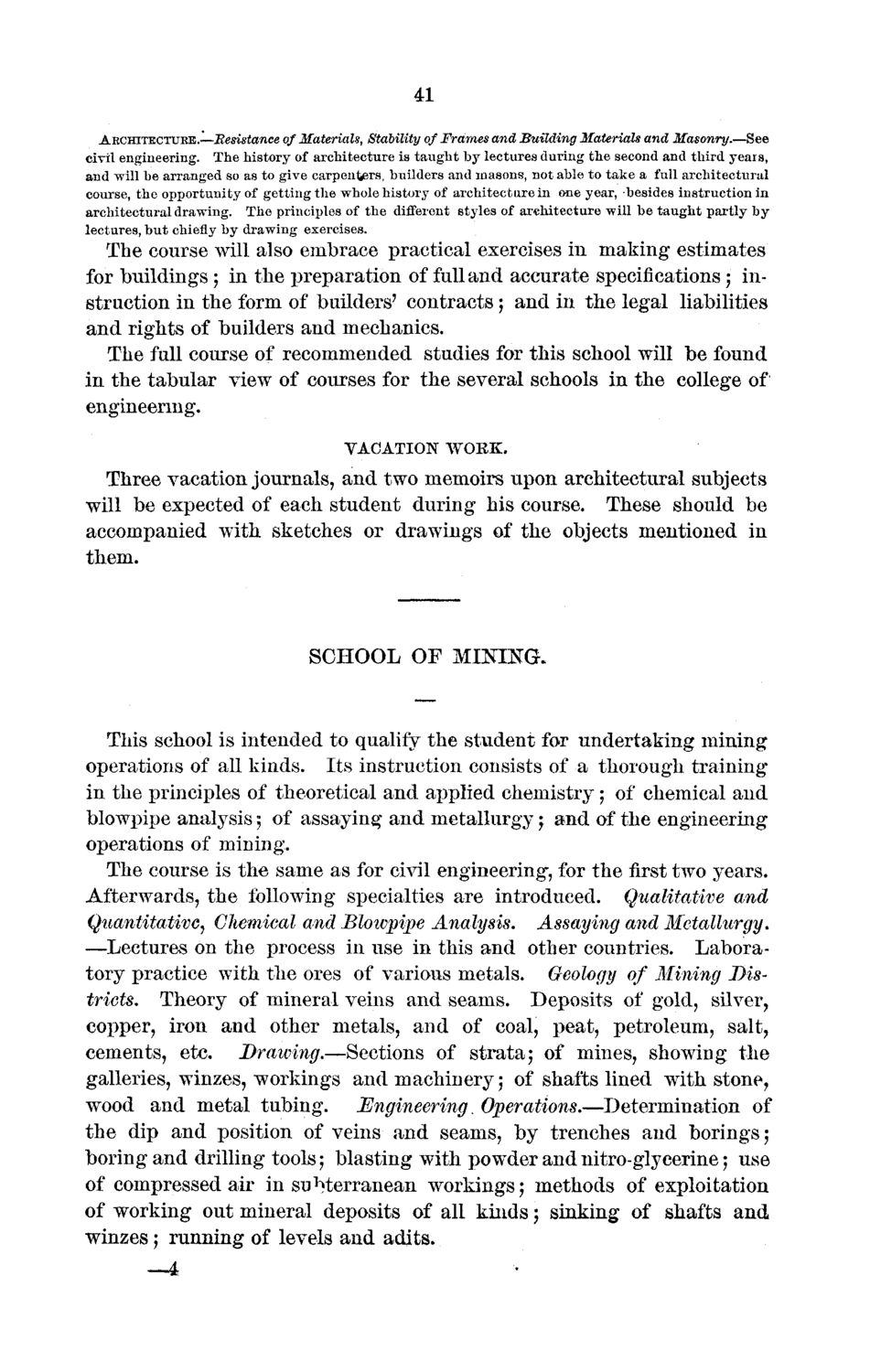| |
| |
Caption: Board of Trustees Minutes - 1872
This is a reduced-resolution page image for fast online browsing.

EXTRACTED TEXT FROM PAGE:
41 ARCHITECTURE.—Resistance of Materials, Stability of Frames and Building Materials and Masonry.—See civil engineering. The history of architecture is taught by lectures during the second and third years, and will be arranged so as to give carpenters, builders and masons, not able to take a full architectural course, the opportunity of getting the whole history of architecture in one year, besides instruction in architectural drawing. The principles of the different styles of architecture will be taught partly by lectures, but chiefly by drawing exercises. The course will also embrace practical exercises iu making estimates for buildings; in the preparation of full and accurate specifications ; instruction in the form of builders' contracts ; and in the legal liabilities and rights of builders and mechanics. The full course of recommended studies for this school will be found in the tabular view of courses for the several schools in the college of engineering. VACATION WORK. Three vacation journals, and two memoirs upon architectural subjects will be expected of each student during his course. These should be accompanied with sketches or drawings of the objects mentioned in them. SCHOOL OF MIKING. This school is intended to qualify the student for undertaking mining operations of all kinds. Its instruction consists of a thorough training in the principles of theoretical and applied chemistry ; of chemical and blowpipe analysis ; of assaying and metallurgy ; and of the engineering operations of mining. The course is the same as for civil engineering, for the first two years. Afterwards, the following specialties are introduced. Qualitative and Quantitative, Chemical and Blowpipe Analysis. Assaying and Metallurgy. —Lectures on the process in use in this and other countries. Laboratory practice with the ores of various metals. Geology of Mining Districts. Theory of mineral veins and seams. Deposits of gold, silver, copper, iron and other metals, and of coal, peat, petroleum, salt, cements, etc. Drawing.—Sections of strata; of mines, showing the galleries, winzes, workings and machinery; of shafts lined with stone, wood and metal tubing. Engineering. Operations.—Determination of the dip and position of veins and seams, by trenches and borings; boring and drilling tools; blasting with powder andnitro-glyeerine; use of compressed air in subterranean workings; methods of exploitation of working out mineral deposits of all kinds; sinking of shafts and winzes; running of levels and adits. —4
| |